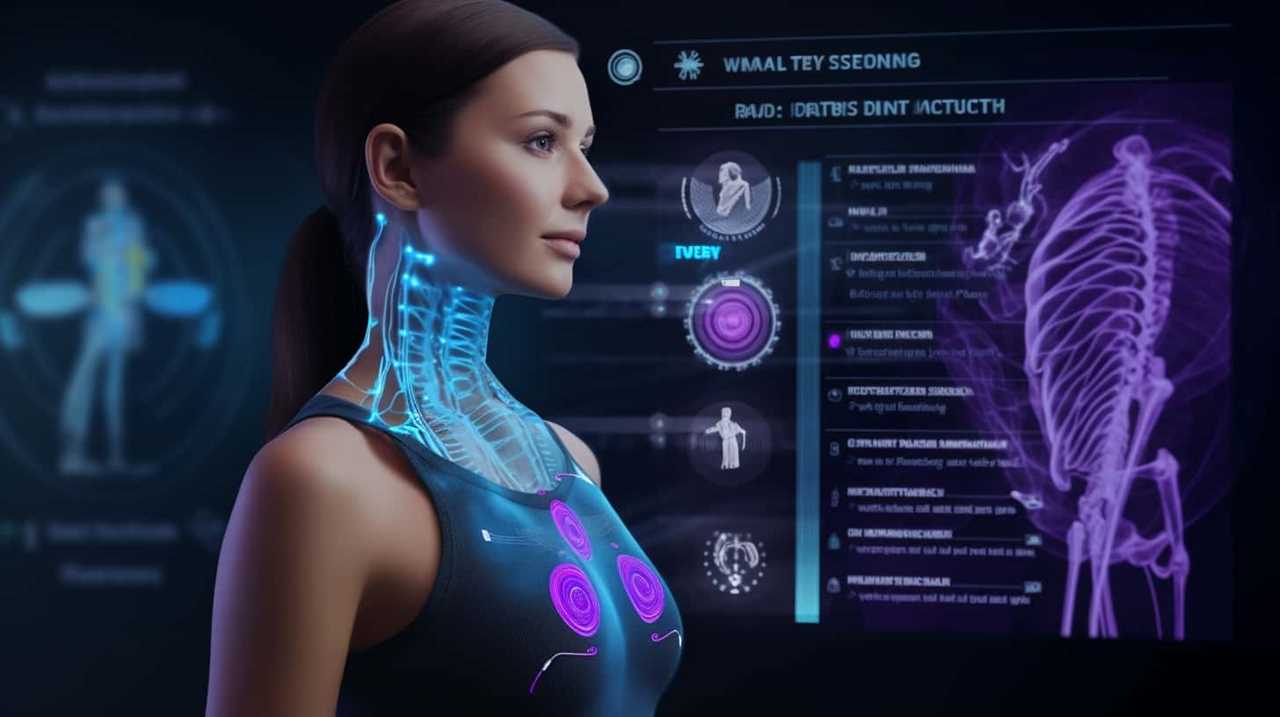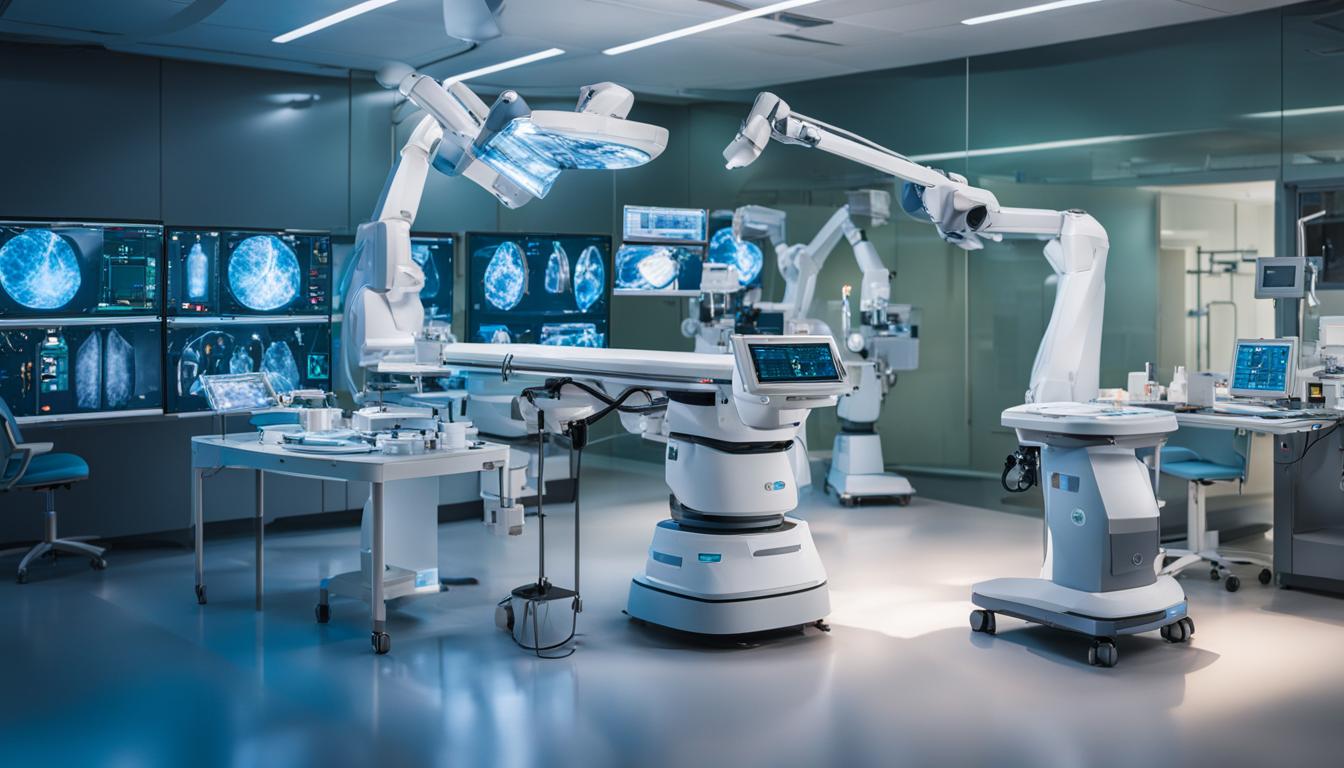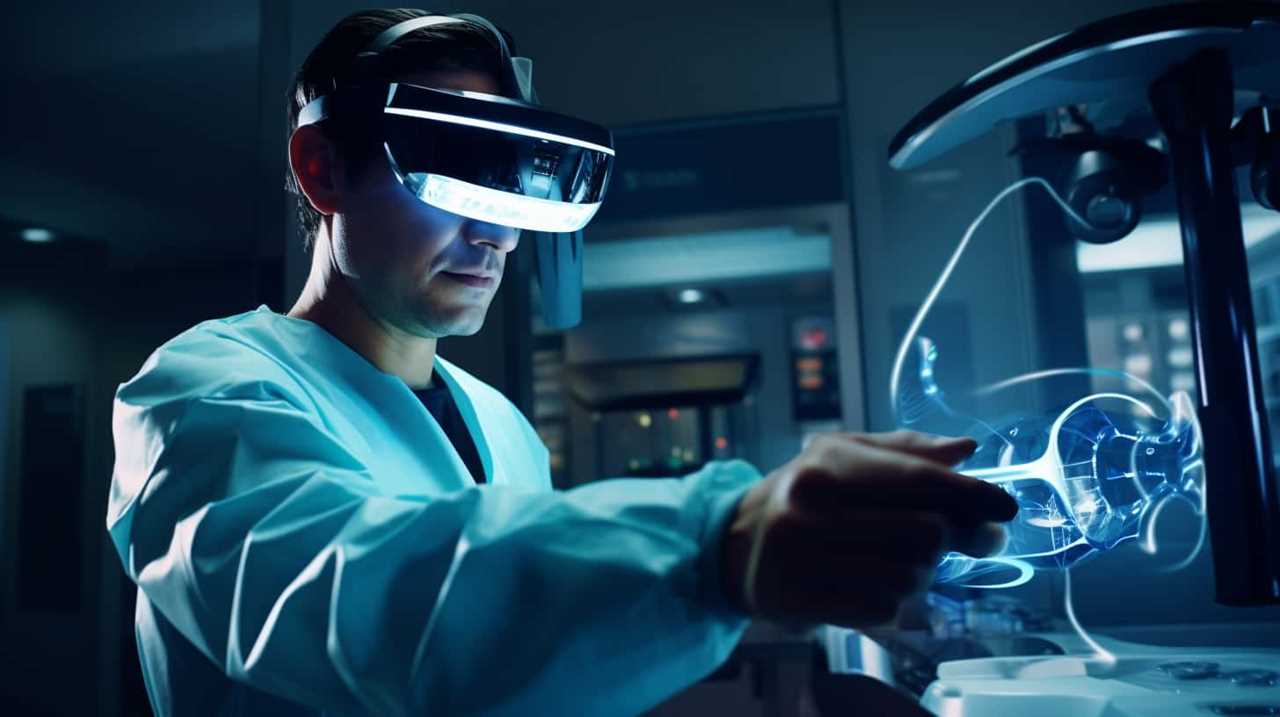Our goal is to lead the way in drug discovery by identifying nine key ways in which machine learning is revolutionizing the field of medical artificial intelligence.
Through improved target identification, accelerated compound screening, and predictive toxicology assessment, we are at the forefront of enhancing drug design, optimization, and personalized medicine development.
Join us as we delve into the intricacies of this groundbreaking technology, unlocking new possibilities in the world of pharmaceutical research.
Key Takeaways
- Machine learning algorithms greatly improve target identification in drug discovery.
- Machine learning algorithms significantly accelerate compound screening.
- Machine learning algorithms enable predictive toxicology assessment in drug discovery.
- Machine learning algorithms play a crucial role in personalized medicine development.

Improved Target Identification
We have greatly improved target identification in drug discovery through the use of machine learning in medical AI. Target validation and target prioritization are crucial steps in the drug discovery process, and machine learning algorithms have revolutionized these tasks.
By analyzing vast amounts of data, including genomic and proteomic information, machine learning algorithms can identify potential drug targets with high accuracy. These algorithms can also prioritize targets based on various criteria, such as target expression levels, drug accessibility, and therapeutic potential. This enables researchers to focus their efforts on the most promising targets, increasing the efficiency and success rate of drug discovery.
Machine learning also allows for the identification of new targets that may have been overlooked using traditional methods.

Accelerated Compound Screening
To further enhance the drug discovery process, machine learning algorithms have significantly accelerated compound screening by analyzing vast amounts of data and identifying potential drug candidates with high accuracy. This process, known as virtual screening, involves the use of computational models to screen large databases of compounds and predict their potential activity against a target molecule. By employing machine learning techniques, virtual screening can quickly prioritize compounds for further experimental testing, saving time and resources in the drug discovery pipeline.
In addition to virtual screening, machine learning has also revolutionized high throughput screening (HTS), a traditional experimental method used to rapidly test large numbers of compounds for their effectiveness. Machine learning algorithms can analyze the data generated from HTS experiments and identify patterns or correlations that may be missed by human researchers. This enables more efficient and effective compound screening, leading to the discovery of potential drug candidates with higher success rates.
The table below provides an overview of the advantages of machine learning in compound screening:
| Advantages of Machine Learning in Compound Screening |
|---|
| Accelerated screening process |
| Identification of potential drug candidates with high accuracy |
| Prioritization of compounds for further experimental testing |
| Analysis of large datasets for pattern recognition |
| Enhanced efficiency and success rates in compound screening |

Predictive Toxicology Assessment
Machine learning algorithms continue to revolutionize the drug discovery process by enabling predictive toxicology assessment. This further enhances the identification of potential drug candidates and improves the efficiency of the entire pipeline.
With the increasing availability of large datasets, computational models can now predict the toxicological properties of compounds with high accuracy. These models are trained on data from in vitro testing, where compounds are tested in controlled laboratory conditions.
By analyzing the relationships between chemical structures and toxicological outcomes, machine learning algorithms can predict the toxicity of new compounds before they’re tested in vivo. This not only saves time and resources but also reduces the need for animal testing.

Enhanced Drug Design and Optimization
By leveraging machine learning algorithms, we can enhance drug design and optimization in the field of medical AI. With the help of pharmacokinetic modeling and virtual screening techniques, machine learning algorithms can expedite the process of drug discovery and development. Pharmacokinetic modeling allows us to understand how drugs are absorbed, distributed, metabolized, and eliminated by the body, enabling us to optimize dosing regimens and improve therapeutic outcomes. Virtual screening techniques, on the other hand, enable us to screen large libraries of compounds and identify potential drug candidates with the desired pharmacological properties. This not only saves time and resources but also increases the chances of identifying novel and effective drugs. The following table illustrates the impact of machine learning on drug design and optimization:
| Benefits of Machine Learning in Drug Design and Optimization |
|---|
| Accelerates drug discovery process |
| Improves drug efficacy and safety |
| Reduces cost of drug development |
| Enables identification of novel drug candidates |

Personalized Medicine Development
Moving on from enhanced drug design and optimization, we can now delve into the development of personalized medicine in the field of medical AI.
Personalized medicine aims to tailor medical treatments to individual patients based on their specific genetic makeup and characteristics. With the advancements in pharmacogenomics, which involves studying how an individual’s genes affect their response to drugs, and precision medicine, which focuses on delivering targeted treatments based on a patient’s unique profile, medical AI is revolutionizing the way we approach healthcare.
Through machine learning algorithms and data analysis, medical AI can identify patterns and correlations in large datasets, enabling the discovery of personalized treatment options and improving patient outcomes.
This personalized approach holds immense potential to transform the healthcare landscape by maximizing treatment effectiveness and minimizing adverse effects.

Frequently Asked Questions
What Are the Limitations of Machine Learning in Target Identification in Drug Discovery?
Challenges arise in machine learning for target identification in drug discovery. Limitations include insufficient data, potential bias, and the need for expert validation. Drawbacks must be addressed to fully harness the potential of machine learning in this domain.
How Does Machine Learning Accelerate Compound Screening in Drug Discovery?
Machine learning accelerates compound screening in drug discovery by rapidly analyzing vast amounts of data, identifying promising compounds, and predicting their efficacy. This allows us to efficiently sift through potential candidates and focus on the most promising ones.
Can Machine Learning Accurately Predict the Toxicity of Potential Drug Compounds?
Machine learning applications in drug discovery have the potential to accurately predict the toxicity of potential drug compounds. However, assessing the reliability of machine learning models for toxicity prediction is crucial for their clinical implementation.
How Does Machine Learning Enhance the Process of Drug Design and Optimization?
Machine learning algorithms in drug discovery enhance the process of drug design and optimization. We harness the power of data to predict drug-target interactions, optimize lead compounds, and accelerate the identification of potential therapeutics.
What Role Does Machine Learning Play in the Development of Personalized Medicine?
Machine learning plays a crucial role in the development of personalized medicine by leveraging AI to analyze vast amounts of patient data. This empowers healthcare providers to deliver more precise and tailored treatments, revolutionizing personalized healthcare.

Conclusion
In conclusion, machine learning has revolutionized drug discovery in medical AI. It provides a powerful tool for improved target identification, accelerated compound screening, predictive toxicology assessment, enhanced drug design and optimization, and personalized medicine development.
Like a skilled artist with an infinite palette of colors, machine learning paints a vivid picture of the intricate world of drug discovery. It unlocks new possibilities and transforms the way we approach medical research.









